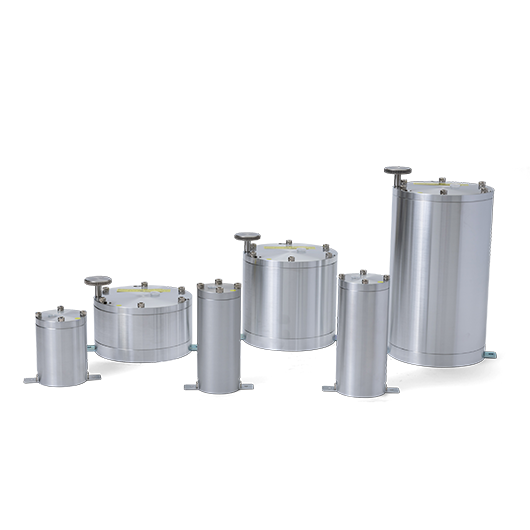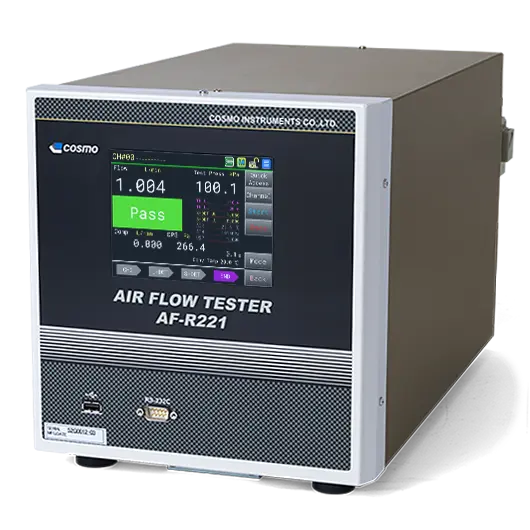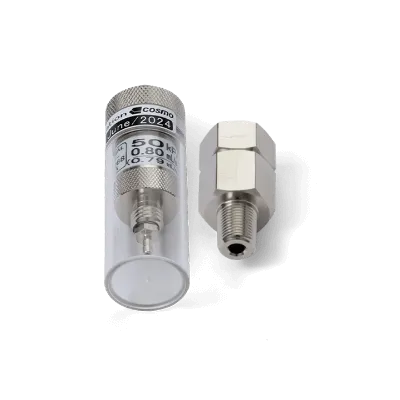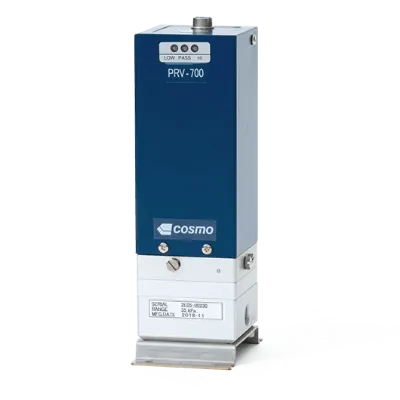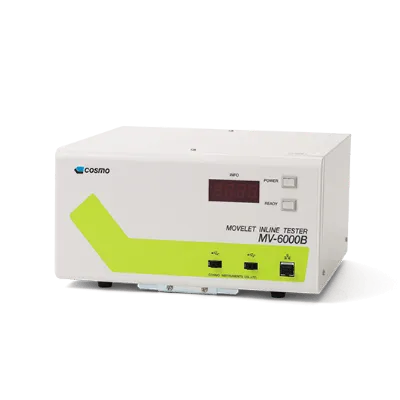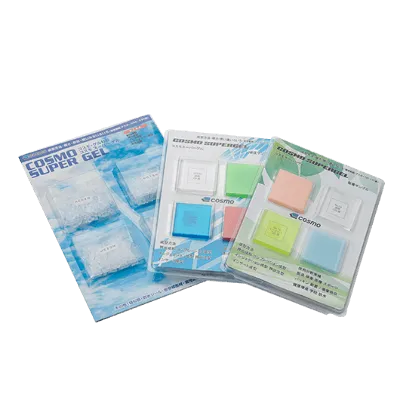MC Series Peripheral
- Master Chamber
- In the Master Comparison method, a non-leaking work is used as the master.
The Master Chamber replaces this non-leaking work.
Robust construction.
Can be used as a stable master for a long time.
Basic Specs.
Types of Master Chamber
| Model | Internal volume adjustment range | Maximum operating pressure |
|---|---|---|
| MC-F02A(100C)*1 | Approx. 56 mL | 800 kPa |
| MC-F02A(200C)*1 | Approx. 109 mL | 800 kPa |
| MC-50B | 25 to 50 mL | 800 kPa |
| MC-100B | 50 to 100mL | 800 kPa |
| MC-200B | 100 to 200mL | 800 kPa |
| MC-500B | 231 to 500mL | 800 kPa |
| MC-1000B | 527 to 1000mL | 800 kPa |
| MC-2000B | 986 to 2000mL | 800 kPa |
* 1 Only for Mastering. The fins cannot be rearranged.
Features / Functions
Role of master

This slight temperature change becomes an error factor for leak test.
In differential pressure decay leak test, the reference (master) cancels out the temperature change of the work.
Mechanism and structure of Master Chamber
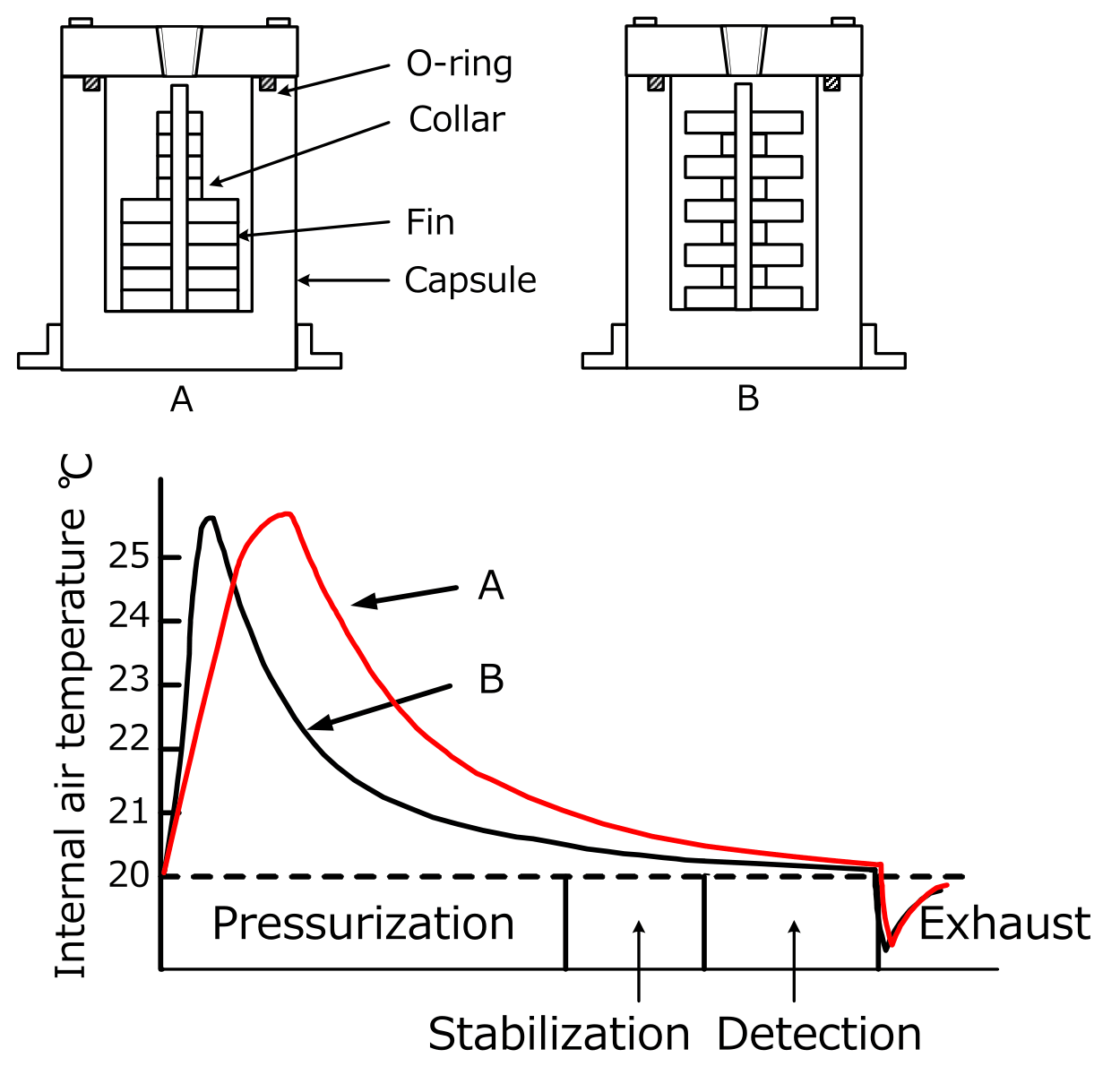
Master Chambers A and B below have different surface areas, causing difference in temperature stabilization, which results in change in pressure change characteristics.
Advantages of using a Master Chamber
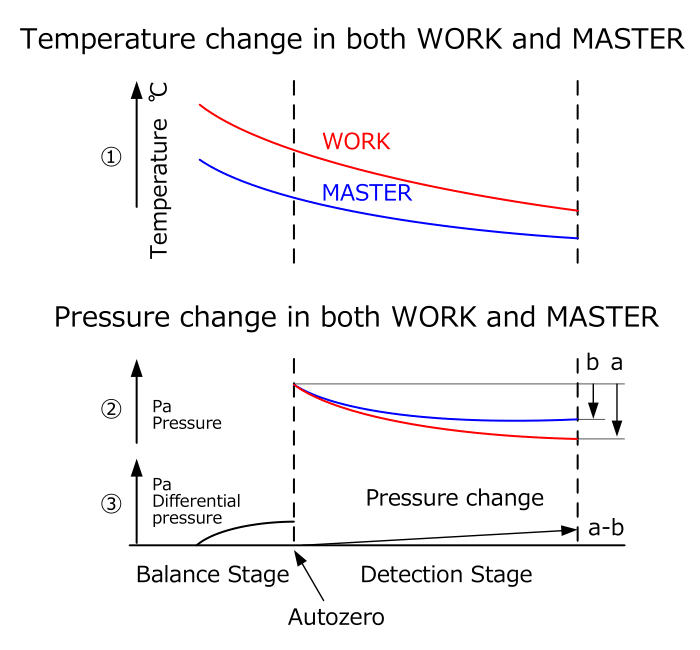
- Can be adjusted according to the work thermal change characteristics.
- Small and space-saving.
- Costs less than using a work as a master.
- Secure sealing with an o-ring ensures long-term reliable use.
- No volume change and excellent reproducibility of measurement.
- When used with Mastering, a single Master Chamber can be used for multiple types of work.
Documents
- * Please fill out the form to download.
- Manual (EN)
- 2D Drawing(MC-2000B)
- 2D Drawing(MC-1000B)
- 2D Drawing(MC-500B)
- 2D Drawing(MC-F02 100)
- 2D Drawing(MC-F02 200)
- 2D Drawing(MC-50B/100B)
- 2D Drawing(MC-200B)
- 3D Drawing(MC-F02A 200C)
- 3D Drawing(MC-F02A 100C)
- 3D Drawing(MC-2000B)
- 3D Drawing(MC-1000B)
- 3D Drawing(MC-500B)
- 3D Drawing(MC-200B)
- 3D Drawing(MC-50B100B)
